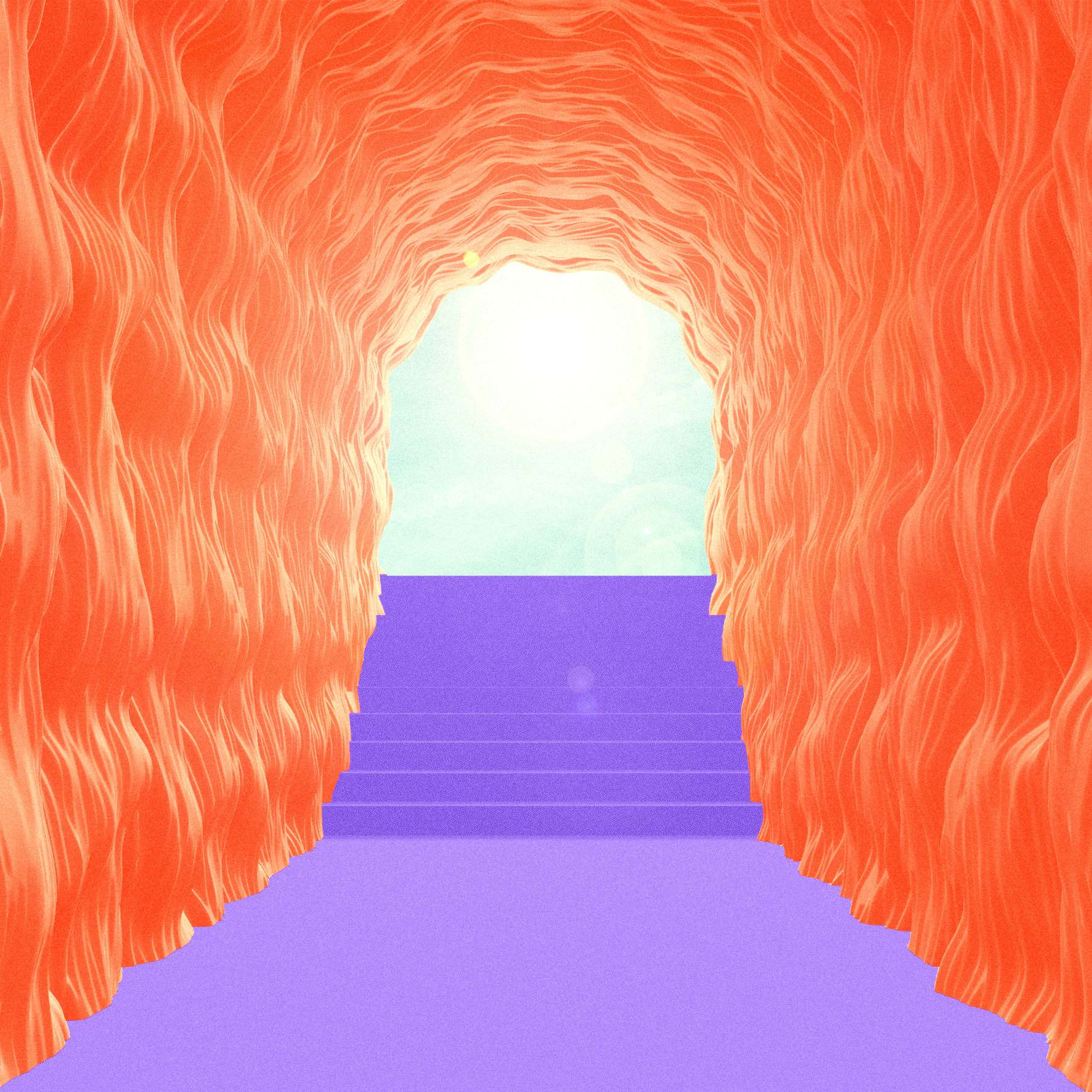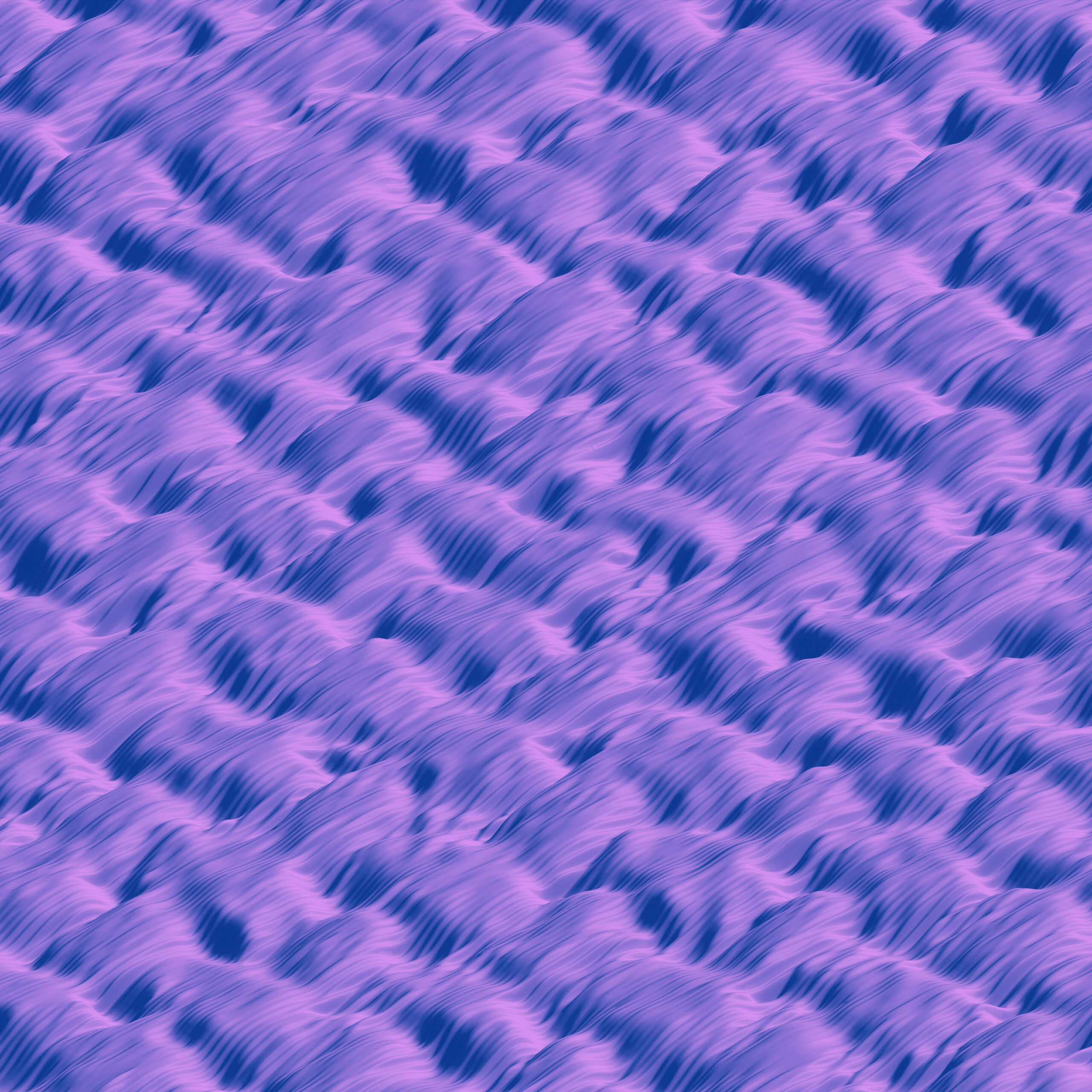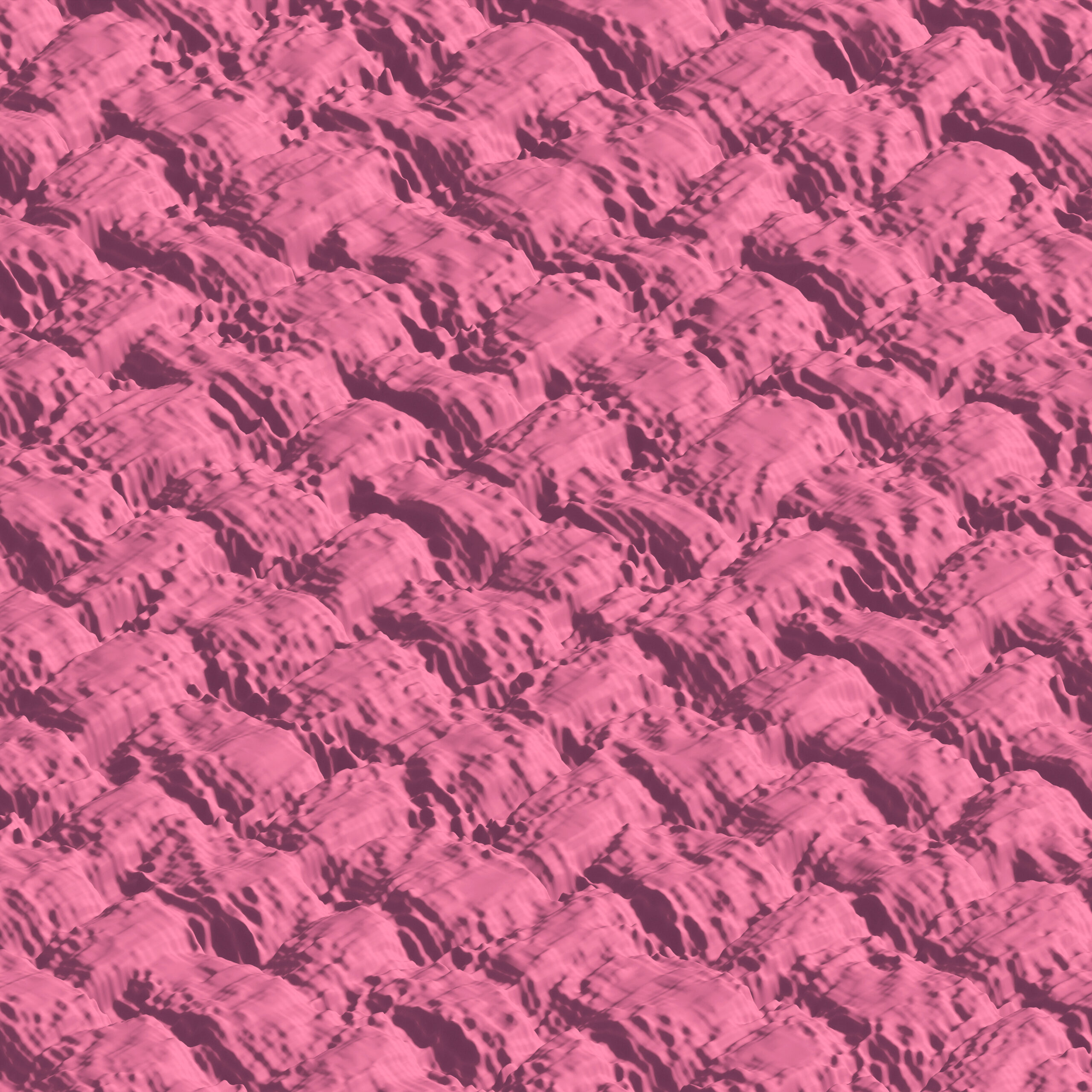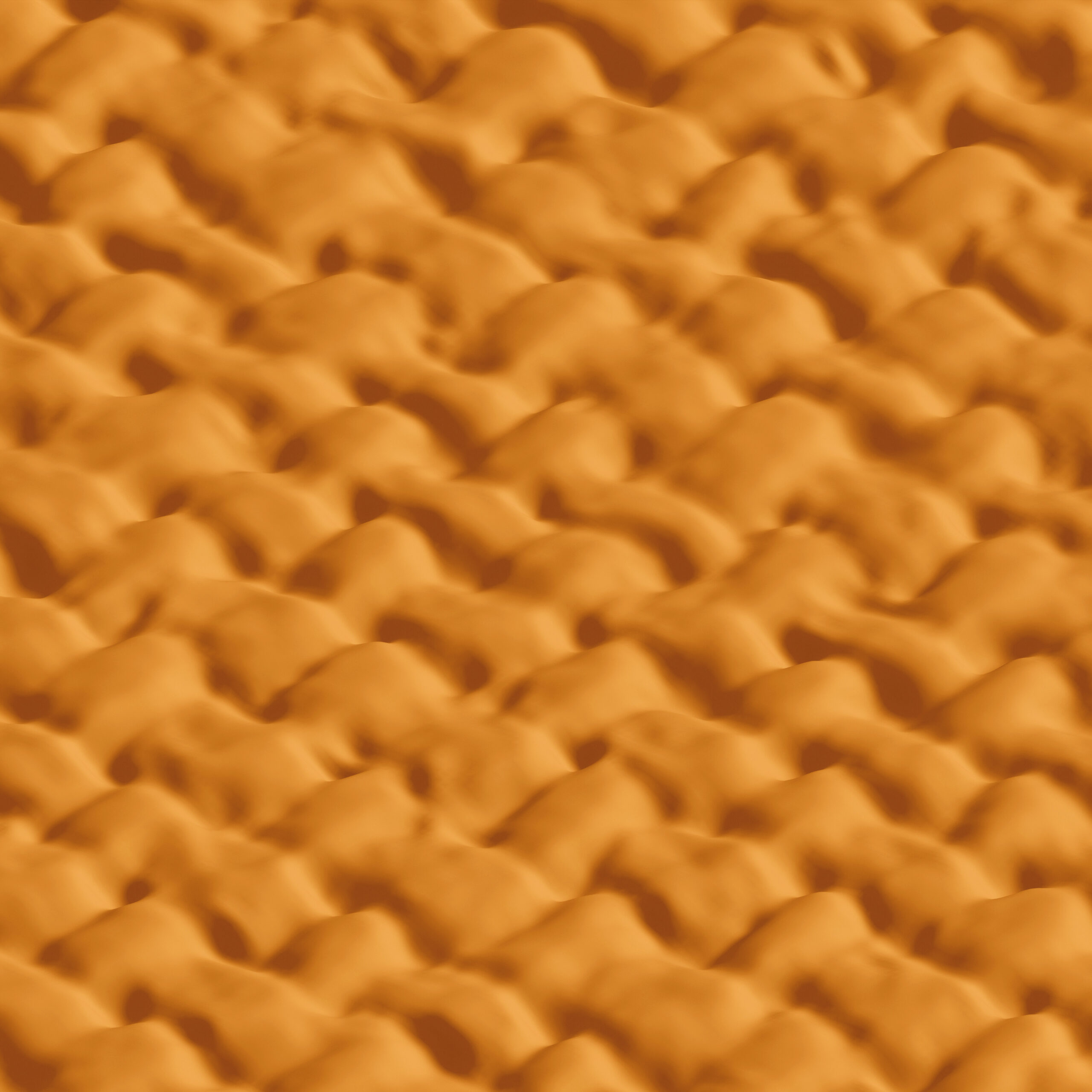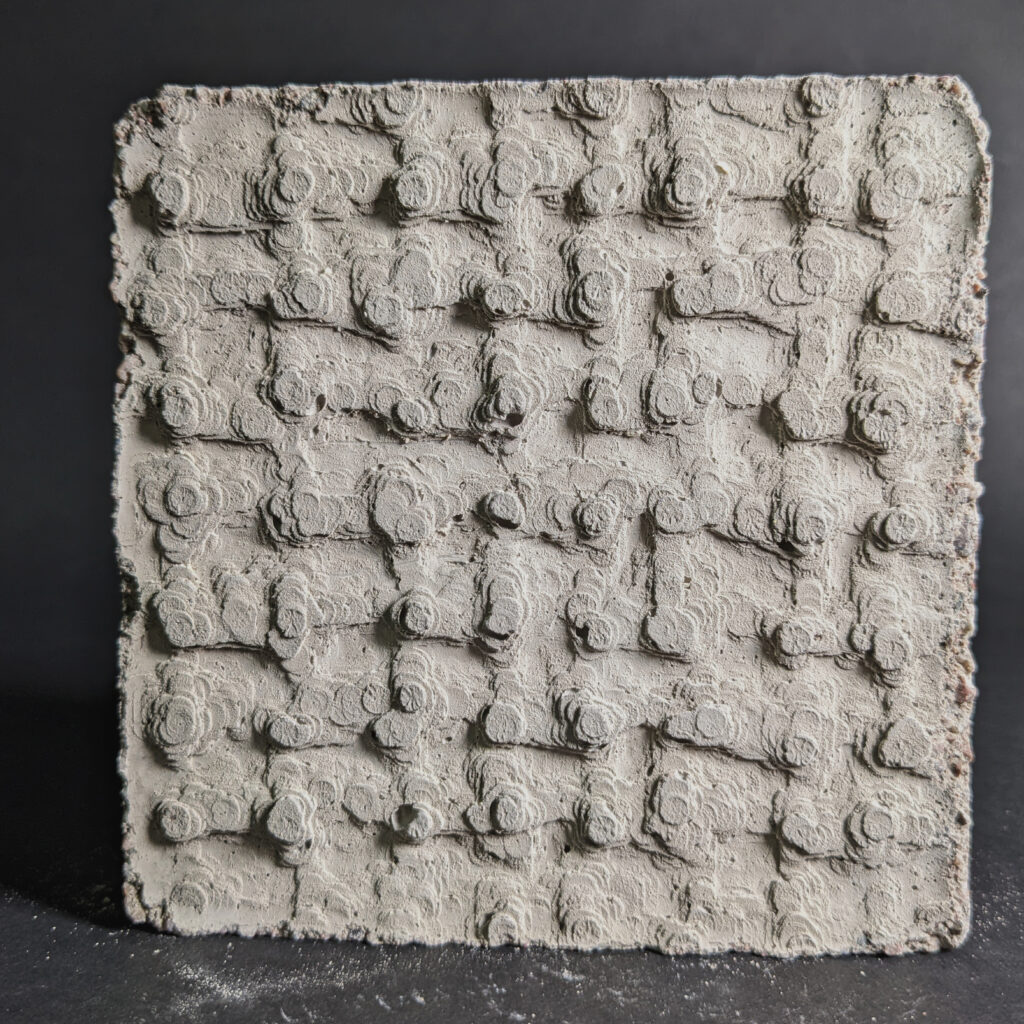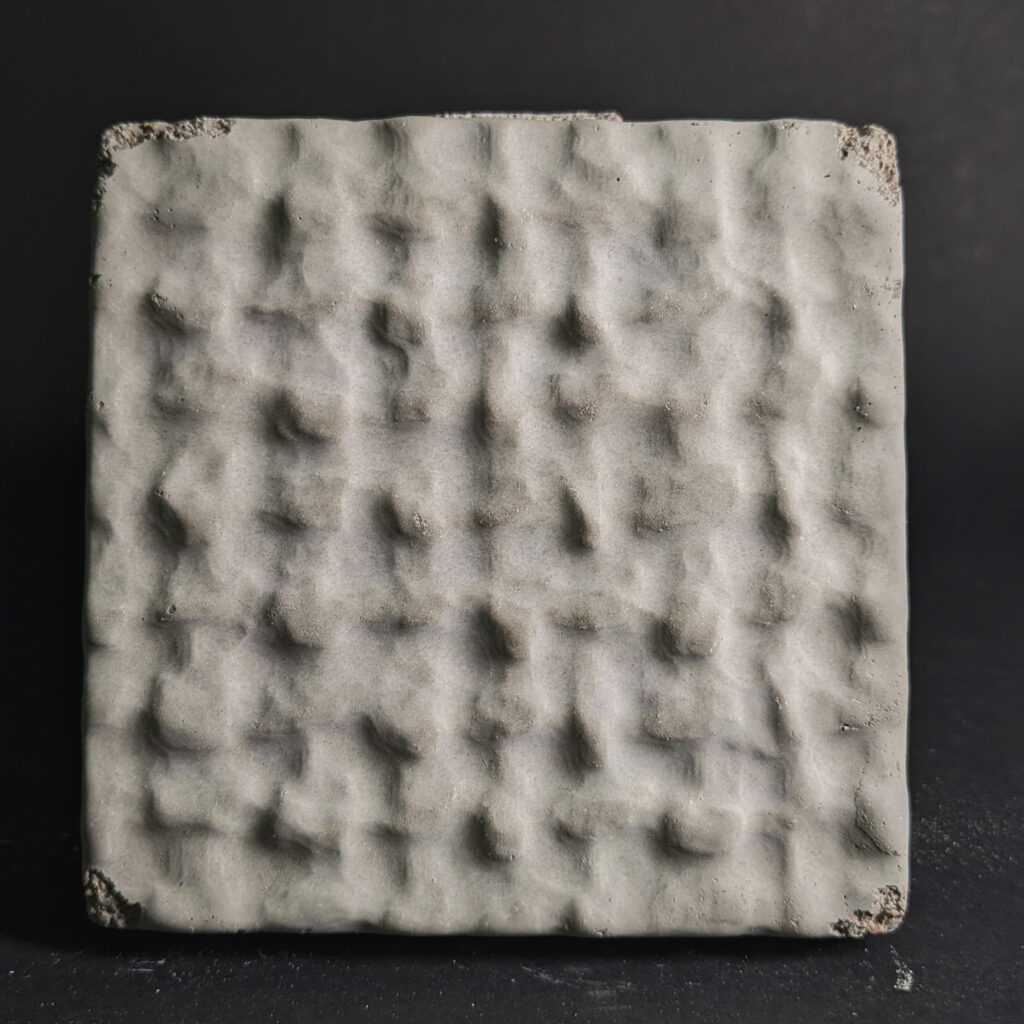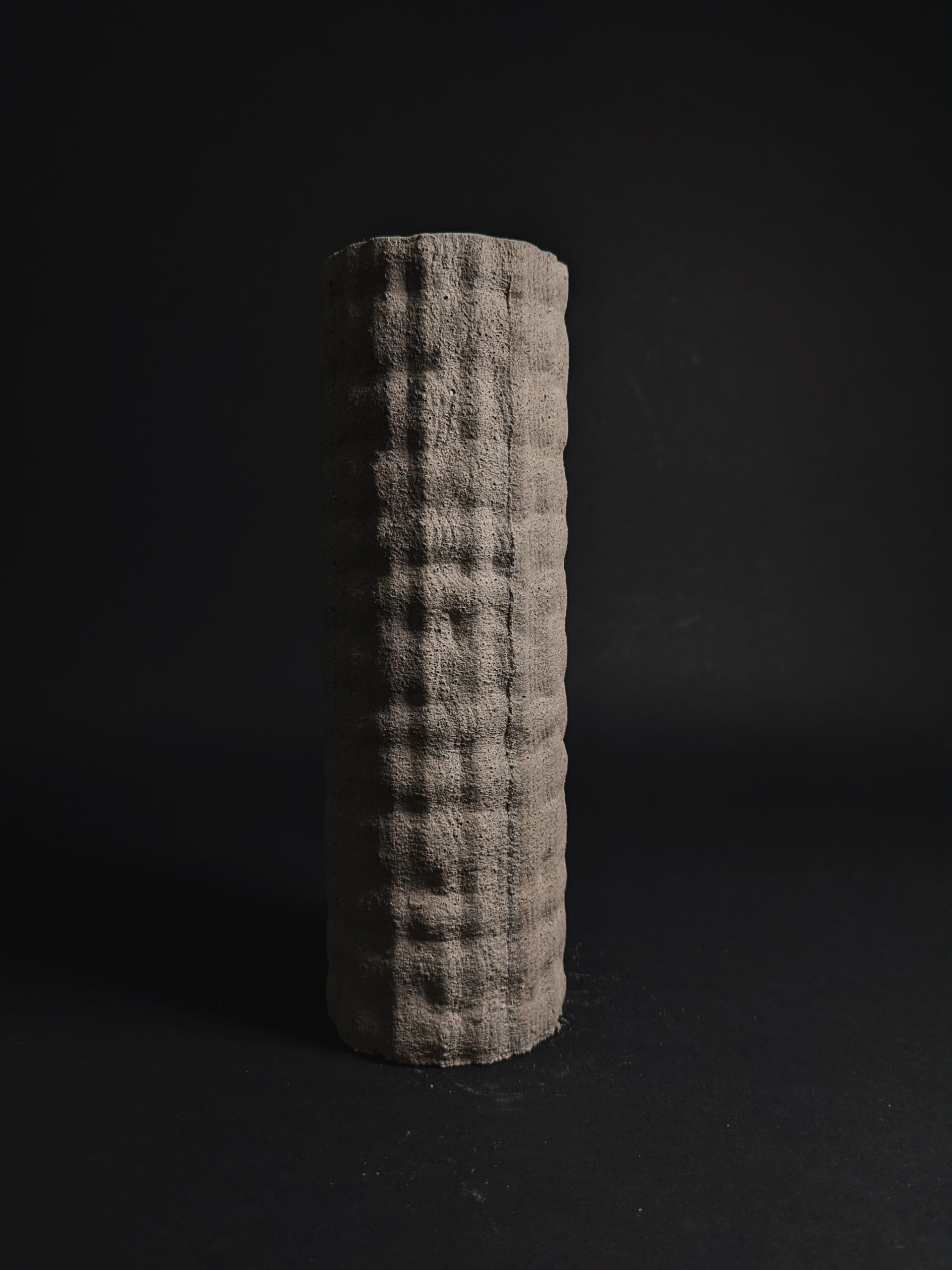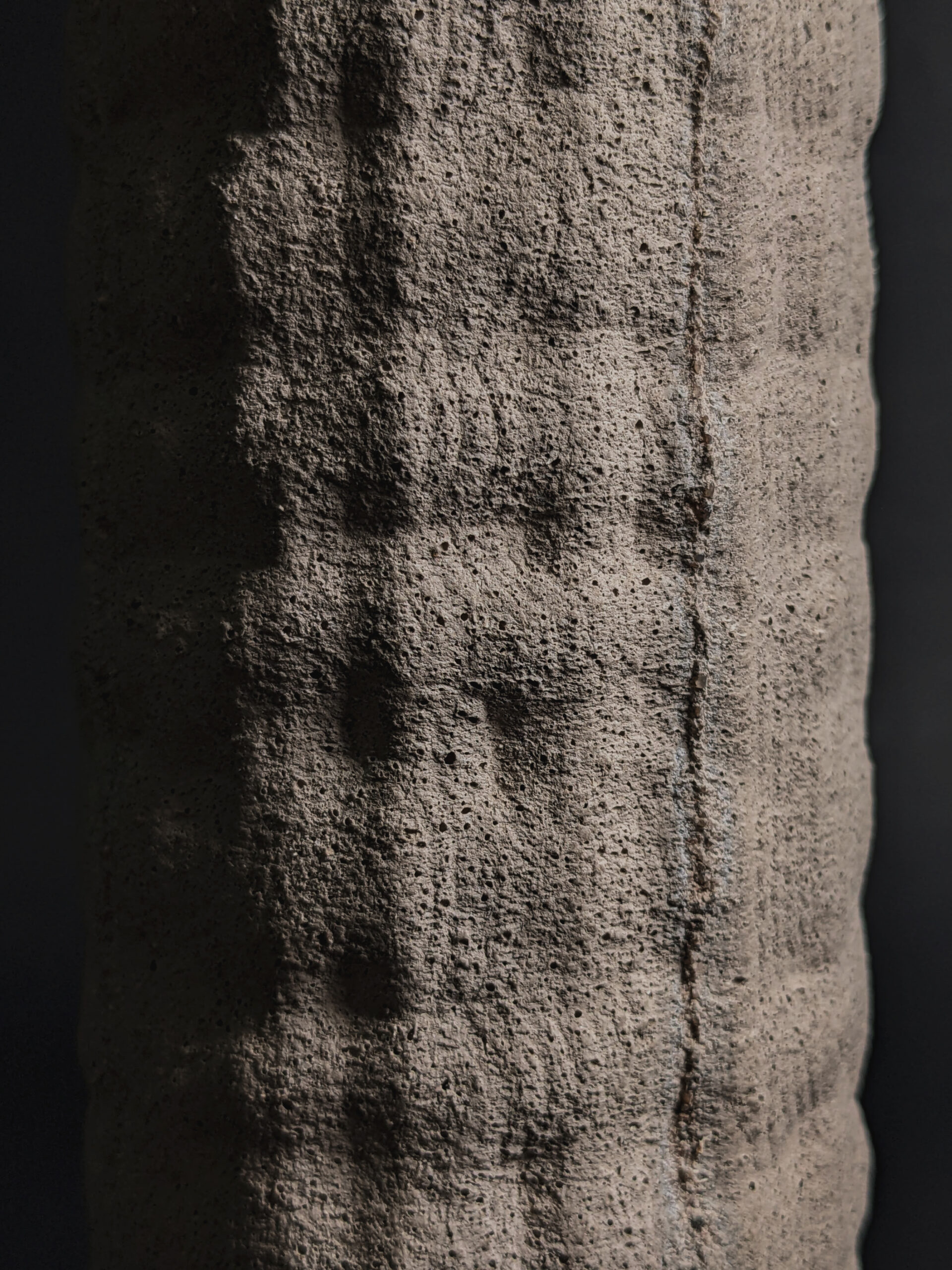Exploration 3: Image sampling
In this exploration the focus was on creating digitally generated irregularity again but approached in another way than in the previous one.
By using image sampling in Grasshopper, and a source image that already possesses irregularities, these qualities could be transferred to a digital model. Digital textures (above) were then created by experimenting with subdivision and smoothing of the surface resulting from the image sampling.
Errors of translation was used as a form generating method in the castings, where the CNC-machine was fitted with a flat headed router bit while using the settings of a round bit. The texture below to the left is a direct negative of the milled mold while the right one was achieved by vaccum forming the mold, and casting in the vaccum form.
A casting test was also done on a column, this time aiming for a more direct translation of the digital model:
One of the digital textures was tested in architectural scale, by applying it onto a vault:
